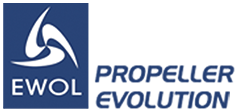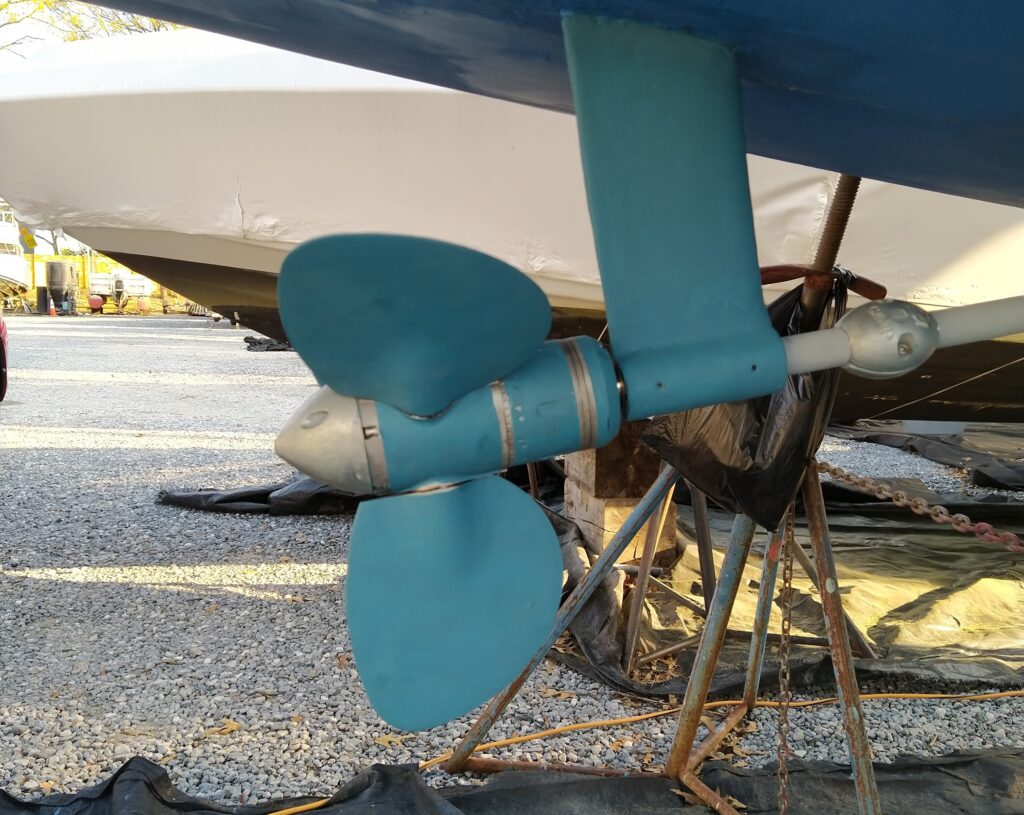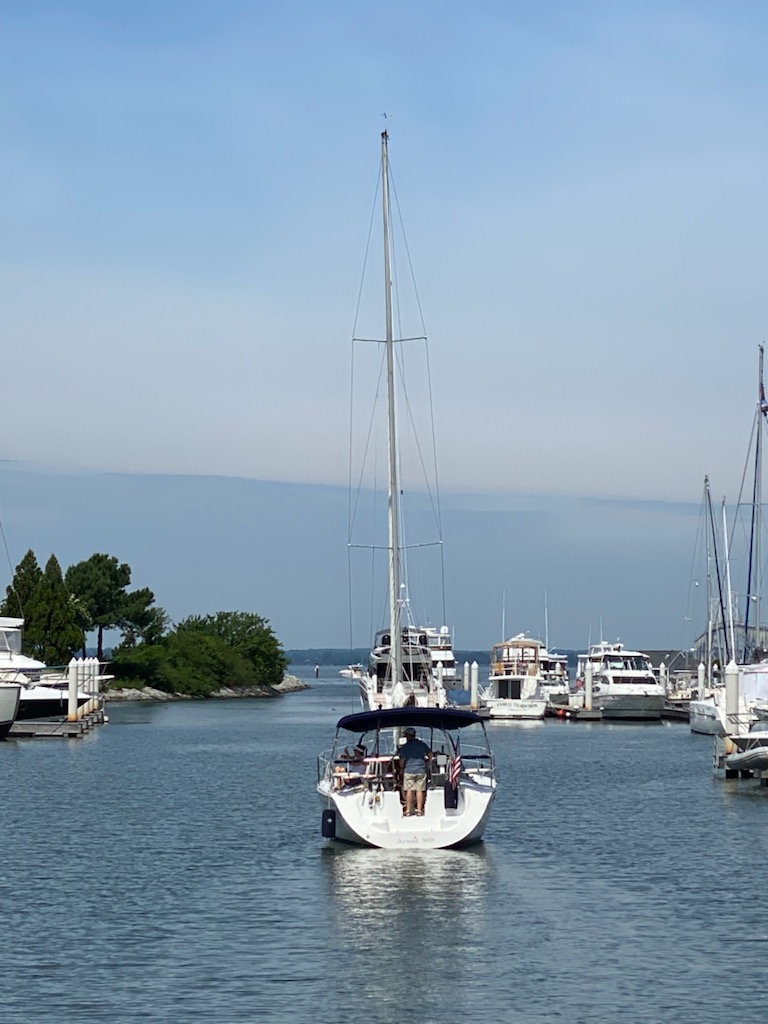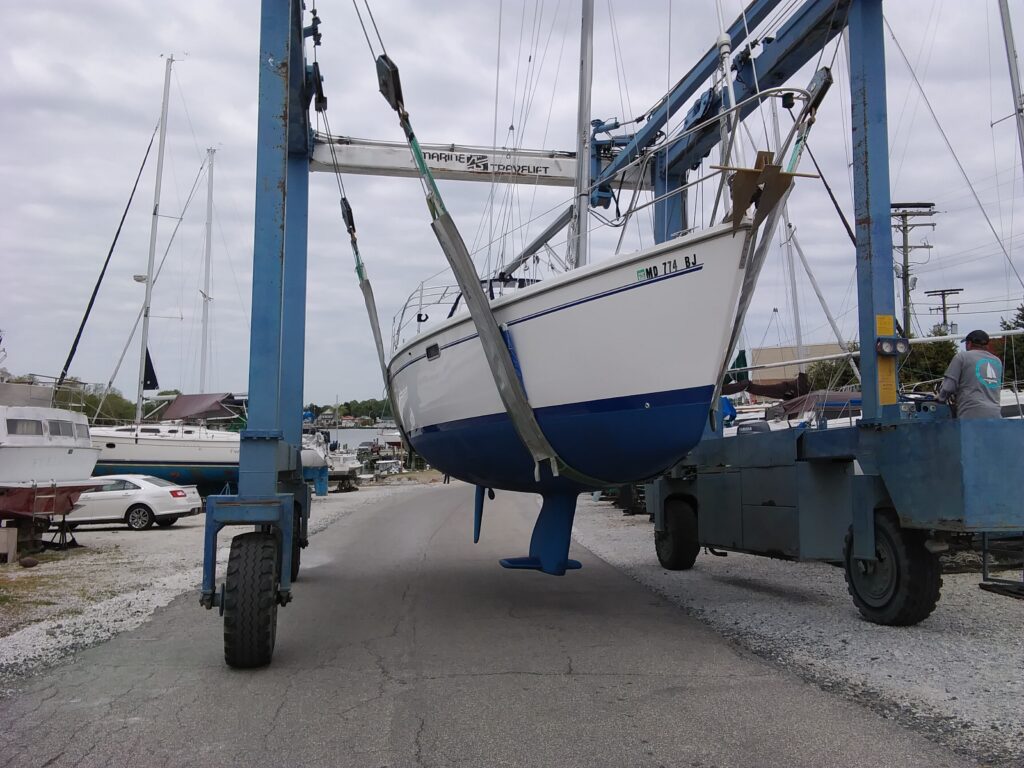Now that I’ve hauled our boat (1999 Catalina 320) for the winter, and having had a full season under my belt with our new EWOL 3-bladed propeller, I wanted to offer some feedback regarding our experience with the change.
Our original propeller was a fixed 3-blade Campbell Sailor, which had generally worked well for us over the past 12 seasons. The Sailor is a reasonably efficient propeller when motoring ahead in relatively smooth sea conditions. As you know, it was designed with a small blade area ratio in order to try to reduce the drag somewhat when under sail. While it likely has lower drag than a more traditional fixed-blade propeller with a larger blade area ratio, of course it cannot compete with feathering and folding propellers in that regard. Furthermore, the reduced blade area lead to a significant performance compromise under power when it came time to stopping the boat from ahead mode. In order to maintain adequate stopping distance when motoring around marinas and other crowded areas, I would need to reduce speed to an excessive degree.
We replaced the original propeller with the EWOL Orion of equal diameter, and with the help of your pitch estimating chart I think we are pretty close to the correct pitch setting on the first try. As for the overall performance of the EWOL, it has exceeded our expectations significantly. The primary reasons for the propeller change for us were to (a) shorten stopping distance which we see as a safety issue and (b) improve speed under sail in our region with predominantly light winds. In both of these areas the new EWOL propeller has performed wonderfully, and I feel confident when motoring into a marina that I have much better control of the boat. It’s hard to quantify the speed gain under sail without careful measurements, but I’m certain it is significant over the full range of sailing conditions based on observations of other boats around us. Furthermore, there was the additional benefit of improved motoring performance in waves. When motoring into a moderate to large seaway with the older propeller, the added wave resistance tended to practically stop the boat with each passing wave crest (our sailing region has shallow water, and the waves tend to be relatively small in height but very steep with a short period). The original propeller just could not generate enough thrust under those conditions and at times you could hear the propeller cavitating. The design and added blade area of the EWOL helped us to power through these conditions with less slowing.
One of my concerns about the transition from a fixed propeller to a feathering is that in normal straight ahead motoring conditions the feathering propeller would suffer a lower efficiency due to (a) the lack of twist in the blades which is needed maintain a constant pitch from hub to tip, (b) the relatively large diameter of the propeller hub and (c) the larger blade area which while helpful in heavily loaded operation can decrease efficiency under normal operation. As of now it seems like this concern was largely unwarranted, as I have not noticed any significant change in calm water powering speed or fuel consumption relative to the fixed bladed propeller. Perhaps there is some, but I suspect that even if there were it could easily be remedied with some tweaking of the pitch angle.
Lastly, I want to thank you and your colleague Ivan for the excellent service and support. You can be assured that if we were to move to a different boat, the decision to install an EWOL would be an easy one.
Kind regards,
S/V Easy Going
1999 Catalina 320





